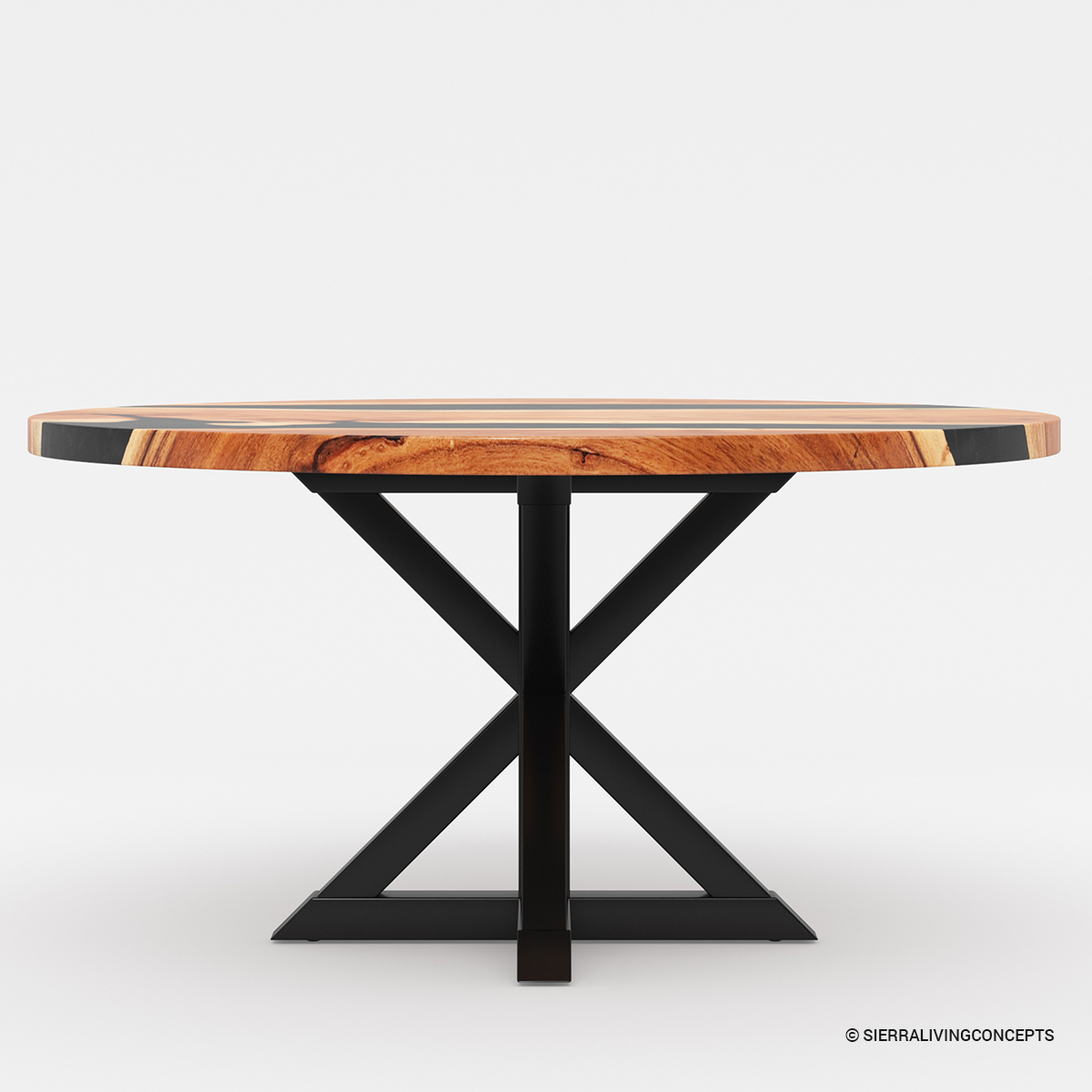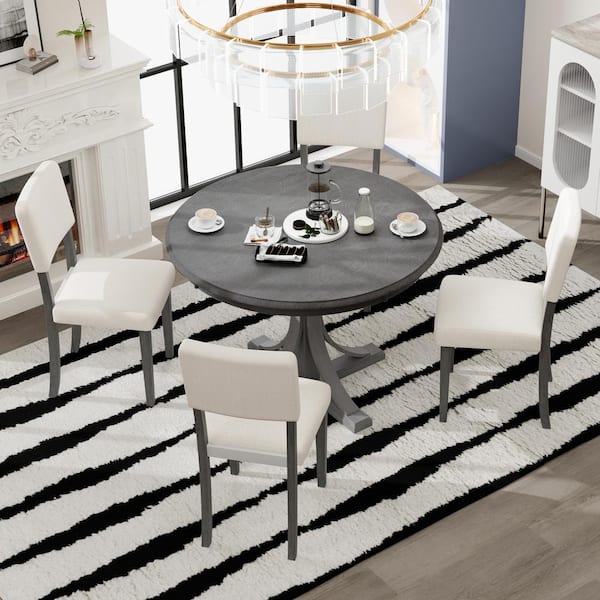Why Custom Dining Room Table Legs Are Worth the Investment
Why Custom Dining Room Table Legs Are Worth the Investment
Blog Article
Specialist Tips for Installing Dining-room Table Legs for Optimum Stability
When it comes to setting up dining area table legs, attaining maximum stability is vital for both functionality and aesthetic appeals. The process starts with selecting the right materials and hardware, complied with by precise positioning and consideration of weight circulation. Each step plays an important role in making sure that the ended up product withstands everyday use without compromising security or layout integrity. Nevertheless, recognizing the nuances of these aspects can dramatically influence the total result. What particular strategies can improve security also better?
Select the Right Legs
When choosing the ideal legs for your dining space table, it is vital to consider both performance and appearances. The legs you select will significantly influence the total layout and stability of the table. First, assess the table's planned usage; if you anticipate frequent gatherings, tougher legs, such as those made from strong wood or metal, may be preferable, as they provide raised toughness and assistance.
Following, think about the elevation and design of the legs in relation to the table top. Conventional eating tables commonly vary from 28 to 30 inches in elevation, so make sure the legs align with this standard for comfort. The style of the legs ought to complement the layout of the tabletop-- whether it be modern, rustic, or traditional. For circumstances, conical legs can add a modern touch, while transformed legs may share a much more traditional aesthetic.

Select Appropriate Hardware
Exactly how can the appropriate equipment improve the security and longevity of your dining-room table? The option of ideal hardware is essential to making sure that the legs of your table are firmly attached and able to withstand regular use. High-quality screws, bolts, and braces offer the necessary stamina to sustain the weight of the table, along with any kind of extra tons put upon it throughout celebrations or dishes.
When choosing screws, select those made from sturdy products such as stainless-steel or brass, which resist deterioration and keep integrity over time. The size of the screws is just as important; they ought to permeate deeply right into the table's structure without compromising integrity. For bolted connections, think about making use of lock washing machines to stop loosening up due to vibration or motion.
Furthermore, making use of edge brackets can add additional assistance, especially for bigger tables or those with larger tops. These braces disperse weight uniformly and help keep the table's shape. Guaranteeing that the hardware you pick is suitable for the details products of your table will certainly even more enhance its total security and durability, allowing you to appreciate your dining experience for years to come.
Ensure Correct Placement
Appropriate placement of dining area table legs is important for both aesthetic appeal and useful stability. Misaligned legs can cause an uneven table top, which might not just be visually uninviting however additionally endanger the table's functionality. To attain ideal alignment, begin by determining the range from the table's corners to the leg accessory points. This makes certain that each leg is positioned equidistant from the sides, producing a balanced appearance.
Make use of a level throughout installation to verify that each leg is vertical to the table top. This action is crucial, as also minor disparities can escalate into significant security issues in time. It is a good idea to mark the desired leg settings on the bottom of the table with a pencil or concealing tape prior see post to protecting them. This technique functions as a visual guide, permitting changes as required.
Additionally, confirm the placement after the first screws are tightened up, as adjustments might be necessary before fully safeguarding the hardware. By focusing on appropriate positioning, you not only enhance the table's overall design but also make sure that it remains secure and useful for years ahead.

Take Into Consideration Weight Circulation
After making sure appropriate placement of the dining-room table legs, it is necessary to consider weight circulation to improve stability and capability. dining room table legs. Appropriate weight distribution is important in avoiding wobbling and making certain that the table can support its designated lots without threat of tipping or collapsing
When placing the legs, ensure they are positioned at equal ranges from the center of the table to equally distribute the weight throughout the structure. Consider the weight of the table top and any products that will frequently hinge on it, such as tabletop devices or attractive pieces. Tables with much heavier surfaces must ideally have legs positioned closer to the edges, as this takes full advantage of the base of assistance and reduces the risk of instability.
Furthermore, if the table is planned for use in a high-traffic area, take into consideration utilizing larger products for the legs or adding supporting elements, such as cross-bracing or a lower rack - dining room table legs. These changes can aid preserve equilibrium and avoid changing throughout usage. Inevitably, a well-considered weight distribution approach will significantly enhance the table's total performance, ensuring it stays a attractive and practical focal point for your eating area
Test Security Prior To Usage
Examining the stability of the dining space table before use is a crucial step that ought to not be ignored. Making certain that the table is safe and secure and stable can protect against accidents and extend the life expectancy of the furnishings. Begin by applying gentle pressure to various More Help points on the table surface. Lower on the facility and afterwards along the sides, observing any type of wobbling or moving. Identify the legs or joints that might require adjustment. if the table reveals instability.
Following, examine that all fasteners and screws are tightened appropriately. Loose links can cause instability and possible damages in time. If necessary, make use of wood adhesive on joints to improve stability, ensuring to enable appropriate drying time.

Verdict
To conclude, the installment of dining space table legs requires mindful factor to consider of products, equipment, positioning, and weight distribution to attain optimum security. By selecting strong legs and high-quality bolts, ensuring exact alignment, and dispersing weight uniformly, the architectural honesty of the table can be substantially boosted. Conducting a stability test prior to normal use further guarantees that the table will certainly hold up against everyday pressures, thus supplying a safe and trusted dining experience.
When it comes to setting up eating area table legs, achieving optimum security is paramount for both capability and visual appeals. The legs you choose will considerably affect the general layout and security of the table (dining room table legs). Typical eating tables typically vary from 28 to 30 inches in elevation, so make certain the legs straighten with this criterion for convenience.Appropriate placement of eating space table legs is vital for both aesthetic appeal and practical stability.In conclusion, the installment of eating space table legs calls for cautious consideration of products, weight, equipment, and placement distribution to accomplish maximum security
Report this page